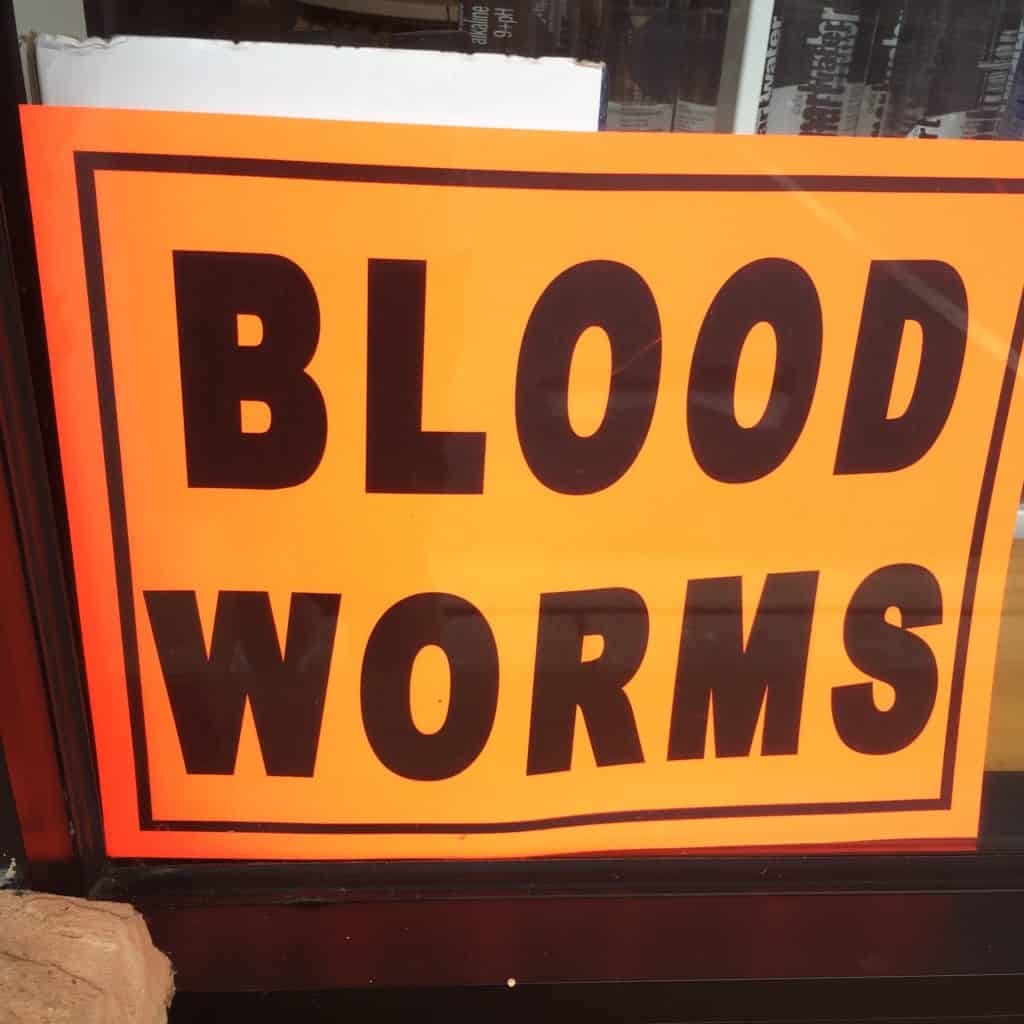Sporting Life

Bloodworms: The best fish bait for the Bay—when you can get it
By Dennis Doyle
The term ubiquitous means something that seems to be all over, everywhere, all the time and when discussing live baits for fishing the Chesapeake that term definitely applies to the bloodworm. They catch everything, everywhere and are used by everyone along the Bay.
Jumbo bloodworms up to 12 inches for big migratory rockfish have long been a key to success in the early springtime. For the rest of the season, smaller sizes for schoolies have garnered many a limit for Maryland anglers. Pieces of bloodworm adorning various sizes of hooks throughout the regular seasons have also secured countless white and yellow perch, Norfolk spot, croaker and catfish.
Their overwhelming popularity, however, has created problems this year. In recent weeks the baits have been totally unavailable and the supply chain for these essential angling bits has broken down repeatedly.
A supply chain is all the necessary links to procuring a product at its source and eventually providing that product to the end user. The COVID-19 crisis alone has caused delivery problems for this, the most overwhelmingly popular Chesapeake bait. Businesses of all types, all over, have been ordered periodically closed because of the pandemic and that includes marine bait businesses and shipment services.
Another critical reason for the breakdown in the bloodworm supply, however, may come as a surprise. Bloodworms are not naturally found anywhere near or around the Chesapeake, they are harvested principally from the tidal mudflats in far distant Maine and that results in an especially extended supply chain. The worms come from a long way away.
Hand-picked, this stoop labor product is captured by individuals armed with a rudimentary hand rake, gum boots, a bucket and a mesh strainer that allows them to be rinsed and sorted for minimum size (four inches is legal).
The very task of harvesting the worms can be hazardous. The tidal flats of Maine can only be accessed at low tide but the tidal flows are nowhere as gentle as found in the Chesapeake. Maine tides are often 20 feet or higher and while there are two cycles a day, like the Bay, anyone not moving quickly and carefully may suddenly find themselves and their buckets of worms being swept out to sea.
To further pinch the supply problem, the bloodworm is one of the most popular baits almost everywhere along the Atlantic Littoral, not just the Chesapeake. Maine’s Department of Marine Resources is responsible for the management of the marine bloodworms but, like all attempts at reining in commercial access, the annual harvest (now down to some 400,000 pounds) has inevitably resulted in overfishing. Harvests have fallen by estimates of up to 75 percent since the 1970s.
Artificial bloodworms, developed by some major fishing tackle companies, have experienced temporary popularity over the last few years but none have lasted very long. The most reliable has been Bag O’ Worms by Fishbites, a soft pink soluble plastic-like material extruded on fabric strips. Their effectiveness has been inconsistent.
Natural alternatives are limited and also of mixed effectiveness: razor clam and grass shrimp, red worms or nightcrawlers. Soft and peeler crabs can actually prove superior but are hard to find, perishable and more expensive than bloodworms.
With future bloodworm supplies in doubt, it is prudent to develop alternate solutions.
One last caveat for the casual user, the critters can bite you. Not at all painfully or seriously, I should point out, but don’t be surprised.
Fishfinder:
The rockfish bite has become difficult. The charter fleets and their accompanying horde of following sport anglers seem to be concentrated on the Eastern Shore a mile or so north of Swan Point and are chumming up limits of stripers in the 19 -to 22-inch range. South of those locations the pickings are slim until you reach the Poplar Island, Eastern Bay areas where some better fish are being found. Trolling is having some success with small to medium bucktails.
White perch are schooling well but are mostly under nine inches. Spot are just about everywhere as are tiny croaker (be careful: they look just like spot but are illegal under nine inches). Crabbing is getting better but is still far from good, keep moving until you find them.
